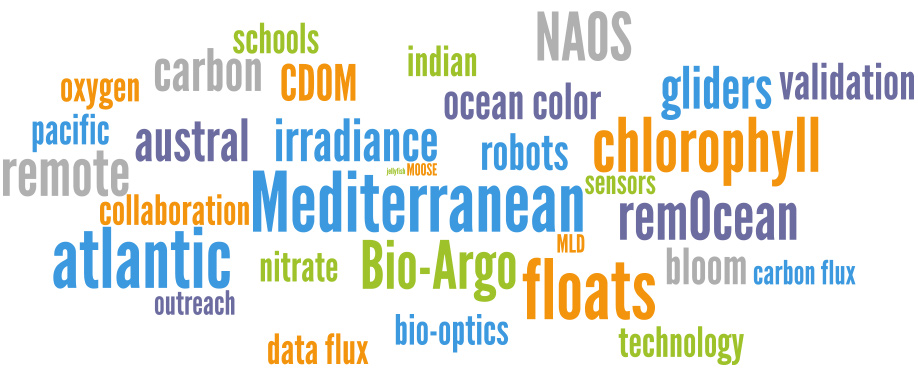Topics

Diverse oceanographic topics are addressed within the context of actions undertaken by the OAO team. This diversity also mirrors the team’s multiple disciplines of expertise.
In order to contribute to a better understanding of the biogeochemical cycles in the Oceans, it is important to investigate how physical forcing impacts on chemical and biological properties. Within this context, OAO undertakes research that ranges from physical dynamics to biological processes and from in-situ biogeochemical observations to remote sensing. Since the OAO ambitions in particular to work at the interface of oceanographic disciplines and technological development, specific concern is given to the “education” and “perspectives” themes.
In general, the OAO focuses its research rather on open Ocean environments (e.g. within the project remOcean), but coastal zones are also of high interest. The OAO for example contributes to the development of glider monitoring applications, which partly have major societal relevance, like the detection of jellyfish shoals.
- Study of biogeochemical specificities of submesocale (1-10km) and mesoscale (10-100km) oceanic features
- Impacts of meteorological events (e.g. cloudiness, storms) on phytoplankton dynamics
- Better understanding and characterization of the biogeography of the Oceans
- Improved characterization of phytoplankton vertical dynamics
- Exploration of oceanic processes at presently unresolved scales of observation (spatial and temporal)
- Dynamics of phytoplankton blooms (initiation, development and fate) in temperate and subpolar latitudes
- Comparative analysis of the various “oceanic deserts” located in subtropical gyres
- Linking surface biological properties "seen" by ocean colour satellites with the same properties within the ocean interior